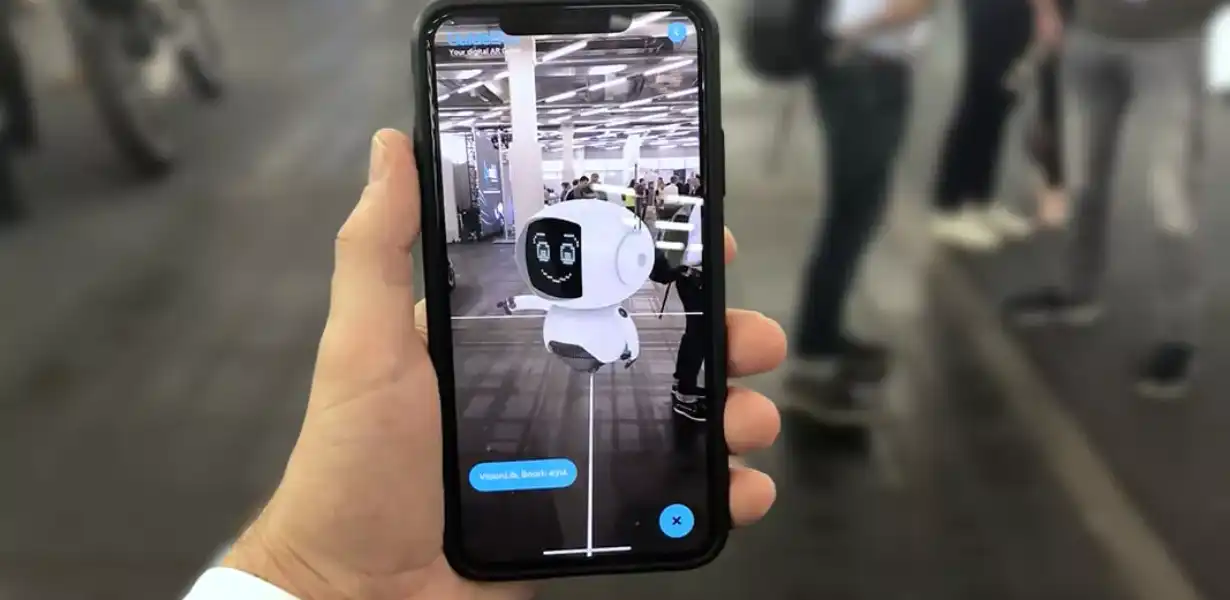
The Rise of Indoor Positioning Systems: How Mobile Navigation Gets Accurate Indoors
- Post
- August 7, 2023
- Mobile & Responsive, Mobile Navigation, Web Design
- 0 Comments
As technology continues to advance, one of the most exciting developments in recent years has been the rise of indoor positioning systems (IPS). These cutting-edge systems have revolutionized mobile navigation, making it possible to achieve accurate navigation even within complex indoor environments like shopping malls, airports, and large buildings. In this blog, we will explore how indoor positioning systems work, their applications, and the impact they have on mobile navigation. Let’s delve into this fascinating realm of indoor navigation.
Understanding Indoor Positioning Systems (IPS)
Indoor positioning systems are a breakthrough technology that enables precise location tracking and navigation within indoor spaces where GPS signals are weak or unavailable. Unlike traditional GPS, which relies on satellite signals, IPS utilizes a combination of various technologies such as Wi-Fi, Bluetooth, beacons, magnetic fields, and inertial sensors to determine the position of a mobile device or user inside a building.
IPS is designed to overcome the challenges of GPS limitations, which include signal blockage by walls and roofs, signal multipath reflections, and signal attenuation. By leveraging multiple positioning technologies and sophisticated algorithms, IPS provides accurate real-time location information, thus opening up a world of possibilities for enhanced indoor navigation.
The Key Components of Indoor Positioning Systems
An indoor positioning system typically consists of the following components:
Anchor Nodes or Beacons: These are fixed devices strategically placed throughout the indoor space. They emit signals that can be detected by mobile devices to determine their proximity and location.
Mobile Devices: Smartphones, tablets, and other mobile devices equipped with IPS-compatible hardware can receive signals from anchor nodes and calculate their position accurately.
Positioning Algorithms: Advanced algorithms process the data received from anchor nodes and other sensors in the mobile device to compute the user’s precise location.
How Indoor Positioning Systems Work
The functioning of IPS involves a combination of trilateration and triangulation techniques. Here’s a simplified overview of how it works:
Signal Detection: When a mobile device enters an indoor space, it scans for signals from anchor nodes or beacons.
Signal Strength Measurement: The mobile device measures the signal strength from multiple anchor nodes. Based on the signal strength, it can estimate the distance between the device and each anchor node.
Trilateration: By using the distance estimates from at least three anchor nodes, the mobile device can calculate its position relative to these nodes. This process is known as trilateration.
Triangulation: In some cases, when the mobile device receives signals from four or more anchor nodes, it can use triangulation techniques to improve location accuracy further.
Applications of Indoor Positioning Systems
The applications of indoor positioning systems are vast and diverse. Here are some of the key areas where IPS has made a significant impact:
Indoor Navigation: IPS allows users to navigate complex indoor spaces seamlessly. Whether it’s finding a specific store in a mall or locating a gate at an airport, IPS enhances the overall indoor navigation experience.
Retail and Marketing: Retailers can utilize IPS to offer personalized promotions and product recommendations based on a customer’s location within the store.
Healthcare: IPS can aid in asset tracking within hospitals, guiding patients to their appointments, and ensuring efficient workflows for healthcare staff.
Warehousing and Logistics: IPS optimizes warehouse operations, enabling real-time tracking of inventory and enhancing order fulfillment efficiency.
The Future of Indoor Positioning Systems
The future of indoor positioning systems looks promising. As the technology continues to evolve, we can expect:
Increased Accuracy: IPS algorithms will become more sophisticated, leading to even higher accuracy levels in determining the position of mobile devices indoors.
Wider Adoption: As businesses and industries recognize the benefits of IPS, we can anticipate its widespread adoption across various sectors.
Integration with Augmented Reality (AR): IPS combined with AR technology can create exciting applications in gaming, navigation, and interactive experiences.
Common Challenges and Limitations
While indoor positioning systems offer immense potential, they are not without challenges:
Initial Setup: Deploying IPS requires careful planning and installation of anchor nodes, which can be time-consuming and costly.
Signal Interference: Signal interference from other electronic devices or radio frequency obstacles can affect the accuracy of IPS.
Battery Consumption: IPS relies on constant communication between the mobile device and anchor nodes, which may lead to increased battery drain.
Final Words
Indoor positioning systems have opened up new possibilities for accurate navigation and location-based services within indoor spaces. With advancements in technology and wider adoption, IPS is set to become an integral part of our daily lives. Whether it’s simplifying shopping experiences, optimizing logistics, or improving healthcare workflows, IPS continues to reshape the way we interact with indoor environments. Embrace this exciting technology and embark on a journey of enhanced indoor navigation.
Frequently Asked Questions
Q1. How accurate are indoor positioning systems?
Indoor positioning systems can achieve high accuracy levels, with some implementations providing accuracy within a few meters.
Q2. Can IPS work without an internet connection?
Yes, indoor positioning systems can function without an internet connection. They rely on local signals from anchor nodes and sensors within the mobile device.
Q3. Are indoor positioning systems secure?
Security is a crucial consideration for IPS implementations. Industry-standard encryption and authentication protocols are used to protect user data and ensure secure communication.
Q4. Can IPS be used for asset tracking in large facilities?
Absolutely! IPS is an excellent solution for asset tracking in warehouses, factories, and other large facilities where real-time location information is essential for efficient operations.
Q5. Are IPS-compatible mobile devices readily available?
Yes, many modern smartphones and tablets come equipped with the necessary hardware to support indoor positioning systems.




